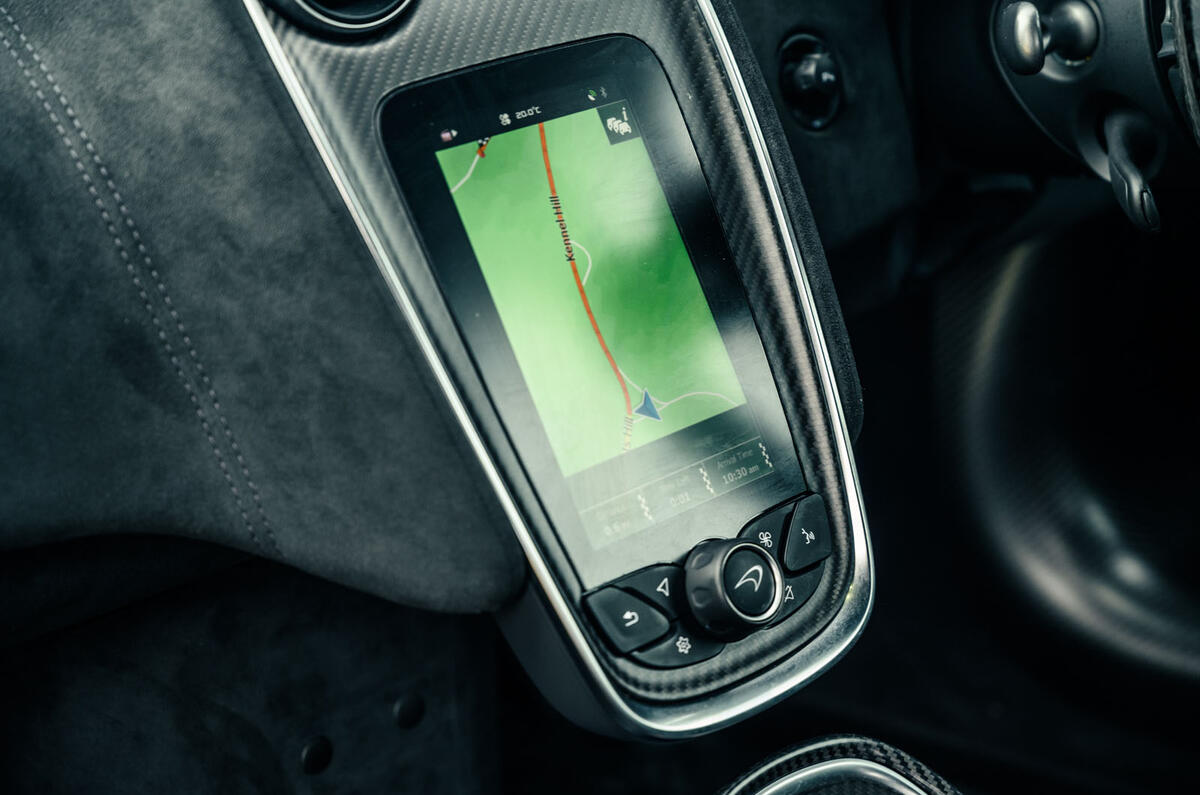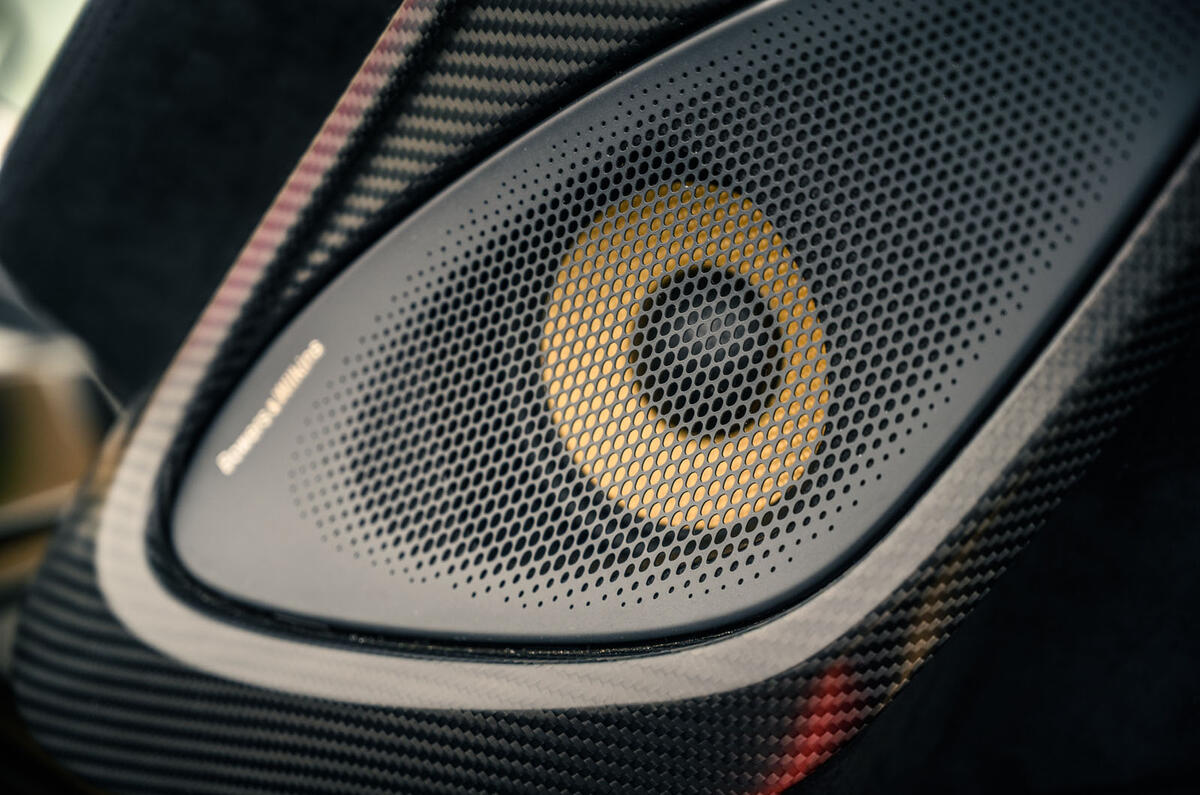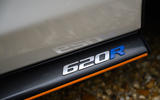The process of swinging open the 620R’s dramatic dihedral door and then lowering yourself down into its cabin isn’t a straightforward, flattering or comfortable one.
The side sills of the car’s tub are wide and fairly tall, so you lift your leg over and step your foot down onto a footwell floor that’s been liberated of its carpets – only to find, with the potential for even more discomfort, that floor can be quite slippery.
All being well, you then pivot and lower your backside down onto the hard, narrow edge of the fixed-backrest carbonfibre racing seat that has been lifted straight out of the McLaren Senna hypercar, before finally swinging your right leg inboard and dropping down into the chair properly. It’s not a routine you’ll wish to repeat any more than necessary, but once inside you’re greeted by a driving environment that’s simple and superbly purposeful.
The driving position is exceptional. McLaren’s typically thin-rimmed, Alcantara-upholstered steering wheel sits directly in front of you and can easily be drawn in close to your chest. The infotainment, starter button and control knobs for the powertrain and chassis settings are all right where you need them to be, thanks to Woking’s foresight in raising the car’s transmission tunnel console for ease of access.
The low dashboard and scuttle afford excellent forward visibility, although the large rear wing does impede the view backwards somewhat. Elsewhere, the racing seats that make ingress and egress so challenging now offer indefatigable support and are surprisingly comfortable over distance.
Regular inertia-reel seatbelts were accompanied by the provision of six-point harnesses in our test car, while bright-red fabric pulls mean you can still just reach up to close those upward-opening doors once you’ve fastened yourself in.
As the base of the chair sits so close to the ground, the 620R offers plenty of head room. We measured 960mm of space, which isn’t quite comparable to what you’d find in, say, a Volkswagen Polo, but all apart from the tallest adults will fit in comfortably even with a helmet on.
That’s not something you can say of all closed-cockpit, road-legal racers. The centre console houses a number of small but deep trays that are ideal for keys, although the harsh vibrations that buzz through the chassis from the engine bay and up from the road do mean such things rattle about noisily on the move.
There are netted storage pockets in the doors, too, but even so, if the car were yours, you’d travel with any loose items kept safe – and quiet – in a bag in the usefully sized front boot.
McLaren 620R infotainment and sat-nav
The 620R comes with McLaren’s old 7.0in infotainment screen, but this doesn’t include sat-nav or an audio system as standard. A track telemetry suite with lap timer is about the extent of the system’s functionality. McLaren will add navigation and a stereo as no-cost options. The same goes for air conditioning.
Our test car had the Iris navigation suite, and an uprated Bowers & Wilkins sound system had also been fitted, at a cost of £3640. The mapping graphics are really pretty basic, and the system can take a while to respond to your inputs. The screen’s small, slightly fiddly digital keyboard means entering a destination address can be a bit of a challenge, too.
The system is otherwise easy enough to learn, and the presence of Bluetooth connectivity, DAB radio and a smattering of USB ports bring some home comforts to the 620R’s cabin. The Bowers & Wilkins system did, however, seem out of place in a car as track-focused and noisy on the move as this.
































































